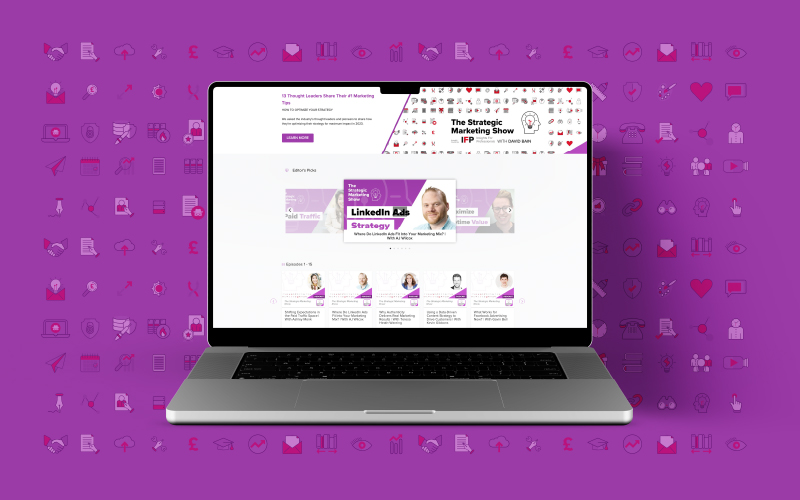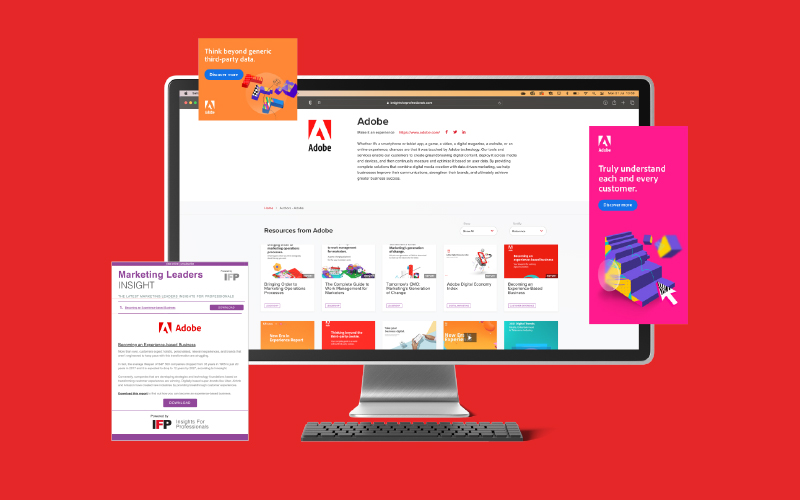Demand generation builds trust and nurtures relationships with your audience—going far beyond simply creating awareness. It’s about connecting meaningfully with potential customers throughout their buying journey and creating effective pathways to generate leads. A well-executed demand generation strategy bridges the gap between marketing efforts and revenue, reducing sales cycles and guiding buyers more effectively toward conversion.
Building that essential trust is key. As Julie Smutko, Head of Demand Gen at Verse AI, highlighted on episode 7 of the Demand Bites podcast:
“I think thought leadership is so important because it really gives you the opportunity to build trust with your ideal customer profile… If you can establish your brand as an expert… then your ideal customer profile will inherently look to you and go to you when they need help…”
This article examines what makes demand generation campaigns work and provides 10 practical examples to inspire your own demand generation tactics.
Core components of a B2B demand generation campaign
Before launching a demand gen campaign, consider these essential elements that create the foundation for success:
Defining clear goals: Start by establishing specific objectives for your campaign. According to a CoSchedule study, of the 70% of marketers who set clear goals before launching a campaign, nearly 47% experience better growth. Clear goals help you select appropriate marketing strategies, measure success, and make data-driven decisions.
Buyer personas: Understanding your target audience enables personalized marketing with relevant content that addresses specific pain points. First and third-party intent data provides valuable insights into customer preferences and behaviors. First-party data comes directly from your CRM and owned channel interactions, while third-party intent data adds depth and breadth to your understanding of potential buyers.
Integrated multichannel tactics: With the average person maintaining 8.5 social media accounts, executing your campaign across multiple social media channels ensures maximum reach. This approach surrounds your target buyers with relevant content wherever they go online, generating quality leads and driving conversions.
Lead magnets: These incentives attract potential customers and encourage them to provide contact information. SaaS businesses often offer free demos or product versions to engage prospective buyers and move them through the demand generation funnel. Effective lead nurturing begins with these initial touchpoints.
Setting metrics and KPIs: Tracking performance indicators helps measure campaign effectiveness. Important metrics to monitor include:
- Number of opportunities generated
- Customer acquisition cost (CAC)
- Cost per lead (CPL)
- Customer lifetime value (CLV)
- Sales cycle timeframe
- Average sales value.
10 proven demand generation examples in action
Ready to explore 10 proven demand generation examples? Here’s how to create demand with successful campaigns:
1. Craft informative content
Creating informative content educates prospective customers and attracts them to your brand. According to B2B demand generation statistics, 81% of buyers find that content significantly impacts their buying decisions.
Using intent data and keyword research, you can create customer-centric, educational material addressing their pain points. Publishing blogs, case studies, webinars, and industry news establishes your brand as a thought leadership source and improves search rankings.
Our research confirms that 88% of B2B buyers trust brands more when they receive valuable content from them.
Example: Inbox Insight consistently offers top, middle, and bottom of funnel content to inform their audience. Visit their B2B Marketing Resource Center for the latest demand generation content.
2. Collaborate with industry influencers
Influencer marketing expands your reach and builds credibility by partnering with respected voices who share your target audience. This approach is effective—75% of decision makers trust brands more when they’re affiliated with industry experts or influencers.
Chris Peters, a B2B marketing leader at Wavemaker, calls that “a crazy stat that should be stopping you in your tracks,” emphasizing how important trusted voices are for building long-term mental availability.
According to WebFX, influencer marketing generates an ROI 11x higher than many other marketing tactics. When selecting influencers, conduct thorough research to ensure they align with your brand values and have authentic influence, not just followers.
Example: The Strategic Marketing Show – a podcast brought to you by our Buyer Education Platform, IFP – that equips senior B2B decision-makers with the knowledge they need to make informed purchasing decisions, has partnered with various marketing thought leaders such as Rand Fishkin, Ashley Monk and many more.

3. Host webinar content
Webinars connect you with potential customers through personalized, interactive presentations of your offerings. They allow real-time feedback and product improvements based on customer insights.
In the first episode of Demand Bites, Ben Alvord, Director of Growth Marketing at Akamai Technologies, emphasized the strategic importance of webinars, noting that when attendees spend 30 minutes watching and align with your ideal customer profile and buyer personas, they become strong prospects for sales teams to connect with.
With conversion rates often cited around 55%, webinars prove highly effective for qualifying leads within your demand generation funnel.
Example: Inbox Insight uses webinars to educate their audience on topics like intent data, B2B buyer behavior, and full-funnel demand generation strategies.
Webinar examples include:
- Uncovering The Blind Spots In The B2B Tech Buying Journey
- Actioning Intent Data: Step-by-Step Strategies for Lead Generation Success in 2025
- Live Teardown: An Enterprise Demand Generation Planning Masterclass
4. Launch a targeted podcast series
Podcasts offer a unique way to build thought leadership while engaging with potential customers during their commutes, workouts, or downtime. This is particularly relevant given that approximately 30% of B2B decision-makers report consuming work-related content during their commute, highlighting the importance of mobile-friendly, easily digestible formats like podcasts.
Unlike most content formats, podcasts create an intimate connection through voice and personality, establishing deeper trust with your audience. For B2B demand generation leaders, podcasts serve as a powerful medium to share expertise, interview industry experts, and address specific pain points that resonate with your ideal customer profile.
Example: Inbox Insight launched Demand Bites, a B2B podcast series that delivers actionable demand generation strategies in bite-sized, 15-minute episodes. The podcast features expert guests who share practical tools to solve common problems in the B2B buyer journey, helping marketing professionals accelerate pipeline growth.
Demand Bites | Season 1: Demand Generation Insights

16:33

16:56

16:53

13:45

11:15

15:21

16:21

16:18
- For even more expert perspectives on how B2B marketers are evolving their strategies, check out What’s Next for Demand Generation: 8 B2B Marketing Experts Reveal Their Insights.
5. Publish insightful and original reports
Supporting product claims with data-driven reports or whitepapers strengthens your demand generation efforts. By conducting research and gathering reliable data, you create comprehensive resources that validate your points while establishing brand authority and educating potential customers about their pain points.
Example: Inbox Insight shares category intelligence reports across business verticals like Enterprise Security, combining first-party research from IFP with intent data to uncover what target accounts are researching, their challenges, and pain points.
6. Free tools
Offering free versions of premium tools attracts potential customers by demonstrating value without commitment. This approach brings prospects into your funnel while motivating eventual upgrades to paid subscriptions as they experience the benefits firsthand. Free tools serve as excellent gated content to generate qualified leads.
Example: Ahrefs, a popular SEO platform, provides a free keyword research tool offering users the top 100 keyword ideas for any search term, plus 50 related questions and essential data like search volume and keyword difficulty.
7. Content syndication
Content syndication cost-effectively amplifies your demand generation campaigns. Repurposing high-performing content across different channels increases your campaign’s visibility and helps increase brand awareness. For example, transforming popular blog content into videos, ads, or infographics extends your reach to new audience segments.
Example: Our Buyer Education Platform, Insights for Professionals, syndicates client content to senior B2B decision makers researching an imminent tech purchase. This strategy intercepts in-market buyers with relevant content matching their information needs.

8. Intent-driven email marketing
Email marketing remains highly effective for lead generation when done thoughtfully. The difference between average and exceptional email campaigns isn’t just using someone’s name—it’s relevance. As Tal Baker-Phillips, Sales Leader at lemlist, puts it:
“Hmmm they think they [want personalization], I think what they want is relevance, not personalization… Relevance beats personalization every day of the week.”
Intent data transforms email effectiveness by tracking which contacts are actively researching topics related to your solutions, allowing timely, relevant messaging that aligns with their stage in the buyer journey. According to Campaign Monitor, personalized subject lines are 26% more likely to be opened.
Example: A cybersecurity firm identifies contacts researching “ransomware prevention” using intent data, automatically sending them a targeted whitepaper and webinar invitation while alerting sales representatives to follow up personally.
9. Create fun quizzes
Quizzes are not just for B2C audiences; they can also be effective for B2B companies and their demand generation campaigns. By creating quizzes related to your industry or services, you can engage your audience while pinpointing specific problems or pain points. Quizzes also help in social media engagement and can be a fun way to educate your customers.
Example: Solar Screen, a European distributor of adhesive films, hosted a quiz contest on their Facebook page offering partners and retailers a chance to win technical training.
10. Get employees involved
Your team members can become powerful advocates for demand generation campaigns. Their social networks extend your reach when they share content, while webinars or podcasts featuring your internal experts humanize your brand and build trust with customers. This approach represents one of the best practices in modern demand generation.
Example: Intel created an Instagram account, “We Are Intel,” sharing employee stories that showcase the people behind the technology. With 37.6K followers and a 0.5% engagement rate, this approach clearly resonates.
Ready to unleash your brand’s potential?
Successful demand generation requires thoughtful planning and execution. Whether you’re starting fresh or refining existing efforts, focusing on the fundamentals makes a difference. Consider your goals, understand your audience, and select marketing tactics that create meaningful connections throughout the buyer journey.
The examples above demonstrate different approaches that work across industries—from thought leadership content to employee advocacy. Each can be adapted to your specific business needs and objectives as part of a comprehensive demand generation strategy.
Ready to fuel your demand gen with actionable insights? Our demand gen services help identify and engage your in-market buyers. Speak to our team of dedicated specialists: Get in touch.






